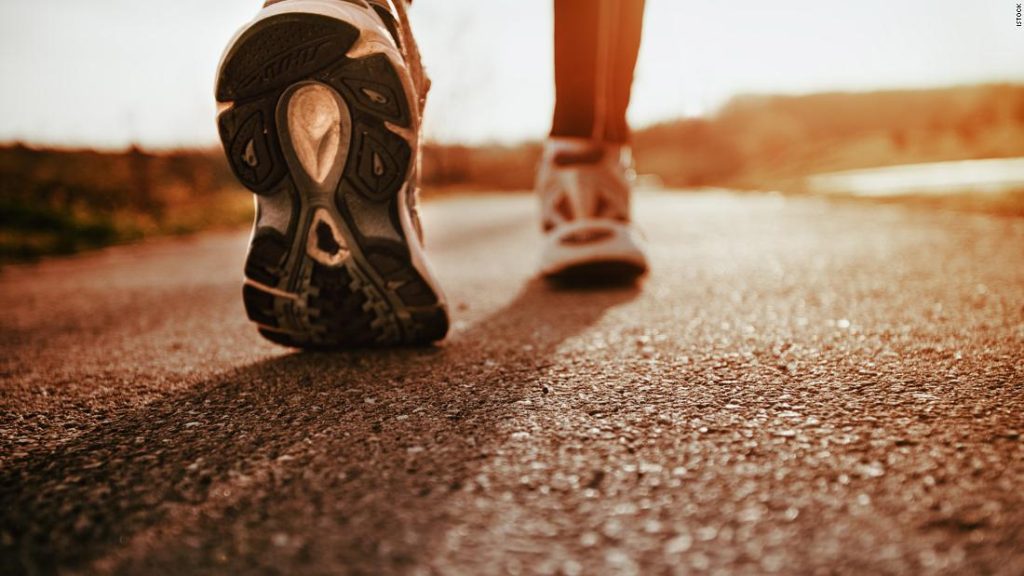Recovering from a car accident can be physically and emotionally challenging. Whether you’re dealing with whiplash, back pain, or other soft tissue injuries, your normal routine, especially your fitness routine, may be interrupted. However, staying active in a safe and structured way can support your recovery, improve your mood, and help you return to full strength faster.
So how can you maintain an exercise routine while recovering from an accident, and what precautions should you take? Let’s dive into some helpful tips, dos and don’ts, and expert advice.
Why Exercise and Movement Matter During Recovery
After a car accident or injury, it’s natural to think that the best approach is to rest completely. And in the initial phase . especially the first 24 to 72 hours after an injury, you need to rest to allow inflammation to subside and to prevent further damage. However, extended inactivity beyond that window can actually do more harm than good.
Prolonged bed rest or immobility can result in:
- Muscle stiffness and joint tightness
- Loss of strength and endurance
- Slower circulation and healing
- Weakened posture and body mechanics
- Mental and emotional setbacks, such as depression and anxiety
That’s why gradual, guided movement is a part of the healing process. When done safely and under the supervision of a medical professional, purposeful activity can:
✅ Improve Blood Flow and Reduce Inflammation
Gentle movement helps increase circulation to the injured area, delivering oxygen and nutrients that aid in tissue repair. It also helps flush out excess fluid that contributes to swelling and stiffness. This process can reduce recovery time and make physical therapy more effective.
✅ Preserve Muscle Mass and Function
After an injury, muscles can begin to shrink and weaken if they aren’t used. Even light resistance or range-of-motion exercises can help prevent muscle loss and maintain joint mobility, so you’re not starting from zero once you’re fully healed.
✅ Support Mental and Emotional Health
Injury recovery can be isolating. You may be limited in what you can do, missing work, or unable to engage in your normal routine. Staying active, even with small exercises, can help release endorphins, improve your mood, and combat feelings of frustration or depression. It also helps you stay connected to your goals and builds a sense of progress.
✅ Reinforce Routine and Structure
When your body feels unpredictable, a consistent movement routine can offer stability. Even a daily walk or a short set of rehab exercises can give you a sense of control, which is incredibly important during recovery. It keeps you mentally focused.
⚠️ Movement Must Match Your Injury
You need to understand that not all movement is beneficial, and in some cases, the wrong type of exercise can delay healing or make things worse. For example:
- Doing high-impact cardio with a herniated disc can cause flare-ups
- Twisting movements may aggravate whiplash or neck strain
- Lifting weights too soon after a fracture can re-injure the bone
That’s why any return to activity must be personalized to your injury, pain level, and healing stage. Your accident doctor can guide you in choosing the right exercises, at the right time, to safely rebuild strength, flexibility, and endurance without risking reinjury.

Step 1: Talk to a Medical Professional First — Before You Exercise
After a car accident, you may feel eager to “get back to normal” as quickly as possible, especially if exercise was already part of your daily life. But jumping back into physical activity without medical advice can actually set your recovery back or cause new injuries to develop.
That’s why the very first step in maintaining your exercise routine during recovery is to consult a Accident Doctor, preferably one who specializes in treating accident-related injuries.
Why You need this step
Even if you feel “mostly fine,” certain injuries like whiplash, soft tissue damage, or small fractures may not cause immediate pain or symptoms. These so-called “hidden injuries” can worsen over time if left untreated or aggravated by physical activity.
By visiting an experienced accident doctor, you’ll receive a evaluation that may include:
- A physical exam
- Diagnostic imaging (X-rays, MRIs, CT scans)
- Range of motion and strength assessments
- Neurological checks for numbness or tingling
This allows your provider to pinpoint the nature and extent of your injuries, even those that may not be obvious right away.
What Your Accident Doctor Can Do for You
Your accident physician isn’t just there to treat your symptoms, they’re a part of your recovery strategy. A good accident doctor will:
✅ Diagnose Your Injuries Properly
Accurate diagnosis is the foundation of effective treatment. Without it, you risk doing the wrong type of exercise, or too much too soon, leading to setbacks.
✅ Advise You on What Movements Are Safe (or Not)
Not all exercises are suitable during recovery. Your doctor can tell you which activities to avoid completely, which are safe with modifications, and which are recommended to aid healing.
✅ Create a Personalized Recovery Plan
You won’t be handed a generic fitness routine. Instead, your doctor can build a custom recovery plan that aligns with your injury, fitness level, and healing goals. This may include stretching, strength training, posture correction, and physical therapy exercises.
✅ Track Your Progress and Prevent Setbacks
Recovery isn’t a straight line. Your doctor can monitor your progress, adjust your treatment as needed, and catch any warning signs that could lead to reinjury or chronic pain. Regular check-ins also help you stay accountable and motivated.
Step 2: Adjust Your Expectations and Goals
After a car accident, one of the most important things you can do for your recovery, and your mental health, is shift your mindset. If you were highly active before your injury, it can be frustrating to suddenly face limitations. But recovery isn’t about pushing through pain or “getting back to normal” as fast as possible, it’s about healing smart and rebuilding safely.
Let Go of the “All or Nothing” Mentality
Some people may fall into the trap of thinking that if they can’t work out exactly like they used to, there’s no point in trying. But in reality, any safe, consistent movement can make a big difference. Instead of chasing your pre-accident performance, shift your focus to:
- Rebuilding strength gradually
- Improving mobility and flexibility
- Reducing pain and inflammation
- Preventing reinjury
- Staying mentally engaged in your recovery process
Recovery is not a race, it’s a journey, and it will likely have ups and downs. Your goals will need to evolve as your body heals.
Set Realistic, Short-Term Goals
Instead of aiming for long-distance running or heavy lifting right away, start with small milestones. These micro-goals help you stay motivated and give you a clear sense of progress, even when you’re not at full capacity.
Examples of short-term recovery goals include:
- ✅ Walk for 10–15 minutes each day without pain
- ✅ Complete a full set of physical therapy stretches
- ✅ Improve your range of motion in the neck or shoulder
- ✅ Sit or stand for longer periods without discomfort
- ✅ Perform basic bodyweight exercises like wall sits or heel raises
These types of goals not only help build confidence, but they also lay the foundation for more advanced movement later on.
Track Your Progress—Not Perfection
Keeping a simple recovery journal, progress chart, or using a fitness app can help you stay accountable and see how far you’ve come. Log things like:
- Pain levels (1–10 scale)
- Duration of activity
- How your body feels before, during, and after exercise
- What movements feel easier over time
This information can also help your doctor fine-tune your recovery plan.
Understand That Setbacks Are Normal
Some days will feel better than others. You might have a week where everything feels great, followed by a day where soreness or fatigue returns. This is normal during the healing process. The key is to listen to your body and communicate openly with your physician.
Don’t view setbacks as failures.
Celebrate Small Wins
Recovery can be slow, but every step forward counts. Whether it’s reaching a new range of motion, getting through the day with less pain, or simply being consistent with your rehab exercises, these are victories worth celebrating.
A positive, flexible mindset is just as important as physical therapy when it comes to a successful recovery.
Step 3: Choose Gentle, Low-Impact Activities
Once your doctor gives you the green light to start moving again, the next step is choosing the right type of exercise. After an accident, your body is in a vulnerable state. Joints may be stiff, muscles weak, and inflammation still present. That’s why you need to focus on low-impact, controlled movements that promote healing without putting unnecessary stress on the injured areas.
Low-impact exercise doesn’t mean low results. In fact, it can:

- Boost blood flow to injured tissues
- Enhance flexibility and balance
- Improve posture and alignment
- Reduce scar tissue buildup
- Help restore confidence in your body
Here are some safe and effective options to consider, with guidance from you treating physician:
✅ Walking
- A foundational movement that helps restore circulation and joint mobility.
- Start with short, flat walks (5–10 minutes) and gradually increase duration.
- Avoid hills, stairs, or uneven terrain until you’re stronger.
💡 Tip: Focus on posture—keep your head up, shoulders back, and walk at a steady, comfortable pace.
✅ Stretching and Mobility Work
- Gentle stretching can reduce tension and improve range of motion.
- Prioritize affected areas like the neck, shoulders, back, and hips.
- Use slow, controlled movements—no bouncing or overstretching.
💡 Tip: Hold each stretch for 20–30 seconds and breathe deeply to relax the muscles.
✅ Water-Based Exercise / Aqua Therapy
- Water supports your body weight, reducing strain on joints and muscles.
- Great for patients with spinal injuries, joint pain, or limited mobility.
- Includes walking, gentle swimming, or guided pool exercises.
💡 Tip: Look for a local physical therapy clinic that offers aquatic rehab.
✅ Chair or Bed Exercises
- Ideal for those recovering from more serious injuries or surgeries.
- Includes leg lifts, ankle circles, seated marches, and light resistance band work.
- Helps keep circulation moving and muscles engaged without weight-bearing.
💡 Tip: Use a sturdy chair and maintain good posture during exercises.
✅ Yoga or Tai Chi (if cleared)
- These mind-body practices improve balance, flexibility, and stress management.
- Avoid poses that strain the spine or require twisting until fully healed.
- Chair yoga can be a gentle starting point.
💡 Tip: Choose a class that focuses on beginner or therapeutic practices.
✅ Light Resistance Training
- Once cleared by your doctor, you may introduce resistance bands or light dumbbells.
- Focus on slow, controlled reps with proper form.
- Strengthens stabilizer muscles and supports joint health.
💡 Tip: Avoid lifting anything that causes pain, strain, or holding your breath.
🚫 What to Avoid (Unless Cleared by a Doctor)
- High-impact cardio (running, jumping, HIIT)
- Contact sports or heavy lifting
- Twisting, bending, or sudden directional changes
- Activities that increase pain, swelling, or numbness
Visual-Friendly Checklist: Safe Recovery Exercises ✅
✔️ Daily Walks (Flat surface, comfortable pace)
✔️ Gentle Stretching (Neck, shoulders, back, hips)
✔️ Pool Exercises (Low resistance, high support)
✔️ Chair/Bed Movements (For limited mobility)
✔️ Beginner Yoga or Tai Chi (Avoid advanced poses)
✔️ Light Resistance Bands (If cleared)
🚫 Avoid running, jumping, twisting, heavy weights, and anything that causes pain or discomfort.
Bonus Tip:
Even low-impact movement should be approached very carefully. Start with 5 to 10 minutes per session, gradually increase intensity, and always monitor how your body responds. If you feel pain, dizziness, or numbness, stop and call your doctor.
Step 4: Listen to Your Body
One of the most powerful tools during accident recovery isn’t a specific exercise or piece of equipment, it’s your own body awareness.
While physical activity plays a key role in healing, doing too much too soon, or pushing through pain, can lead to setbacks, re-injury, or chronic pain conditions. You need to develop a habit of tuning into how your body feels before, during, and after each activity.
Pain Is a Signal—Not a Challenge
There’s a difference between mild discomfort and sharp pain. During recovery, you should never “push through” pain the way some athletes might during training. Instead, treat pain as your body’s way of saying:
🛑 “Something isn’t right—pay attention.”
You should always err on the side of caution. Continuing to exercise while in pain can worsen inflammation, tear healing tissues, or increase recovery time.
Learn the Difference Between “Good” and “Bad” Sensations
During rehab, you may feel some gentle muscle soreness, especially when reintroducing movement after prolonged rest. That’s often normal and expected.
However, certain sensations are red flags and should be taken seriously.
🚨 Stop Immediately If You Experience:
- Sharp or stabbing pain
- Sudden swelling or warmth in a joint
- Numbness or tingling in the arms, legs, hands, or feet
- Dizziness or lightheadedness
- Persistent fatigue that doesn’t improve with rest
- Popping or cracking sounds with pain
- Pain that increases instead of decreases after movement
These symptoms may indicate nerve involvement, internal inflammation, or improper movement. They will require reassessment from your doctor.
📋 Build a Daily Body Check-In Habit
Before every exercise session, take a few minutes to check in with your body:
- How am I feeling today? (Mentally and physically)
- Is there any lingering soreness or tightness?
- Do I feel balanced and stable, or wobbly and weak?
- Am I breathing normally while I move?
- Does anything hurt more than yesterday?
Taking this time helps you adjust your activity based on how you’re actually feeling, not just based on a fixed schedule or expectations.
📊 Recovery Is a Pattern—Track It
Using a recovery log, app, or even a simple notebook to track your workouts, symptoms, and progress can reveal important trends:
- What activities increase or decrease your pain
- Which exercises help you sleep or feel more mobile
- Whether you’re making progress over time or plateauing
This information helps your recovery team and allows them to make adjustments to your recovery plan.

✅ Visual Recovery Self-Check Checklist
Use this list before and after each exercise session:
🔎 Before Exercise:
- Am I feeling rested and alert?
- Do I have any lingering pain, swelling, or tightness?
- Have I eaten, hydrated, and taken any necessary medications?
🧘 During Exercise:
- Am I breathing steadily and not holding my breath?
- Do movements feel controlled and balanced?
- Is my pain level low and stable (no spikes or sharp pain)?
- Am I maintaining proper form?
✅ After Exercise:
- Do I feel energized or exhausted?
- Is my pain level the same, better, or worse?
- Did I push too hard, or could I safely do more next time?
- Did anything unusual happen (clicks, tingling, dizziness)?
Your recovery journey is unique, and no one knows your body better than you. By staying mindful, tracking symptoms, and honoring your limits, you’ll avoid unnecessary setbacks and stay on a steady path toward healing.
Listening to your body doesn’t mean slowing down your progress, it means protecting it.
Step 5: Stay Mentally Strong
Recovering from an accident isn’t just a physical journey, it’s an emotional one, too.
Pain, limited mobility, medical appointments, financial stress, and being pulled out of your regular routine can all take a toll on your mental and emotional health. And when your body isn’t cooperating the way you want it to, it’s easy to feel discouraged, anxious, or even depressed.
That’s why building mental resilience is just as important as sticking to your rehab exercises. A strong mindset will help you stay committed to your recovery, cope with setbacks, and keep moving forward, no matter how long the journey takes.
🧠 Common Mental and Emotional Challenges During Recovery
- Frustration or impatience over slow progress
- Fear of re-injury or loss of independence
- Sadness or depression from lifestyle changes
- Anger or helplessness about the accident or its aftermath
- Isolation due to missed social or work activities
- Anxiety about legal, financial, or insurance issues
If you’re experiencing any of these feelings, you are not alone, and what you’re going through is valid.
🛠️ Strategies to Build a Strong Mindset During Recovery
✅ Celebrate Small Wins
It’s easy to focus on what you can’t do yet. But every bit of progress counts:
- Walked five minutes longer today?
- Had less pain getting out of bed?
- Finished your rehab stretches consistently for a week?
Celebrate it. Acknowledging these moments helps you stay positive and focused on your momentum, not just the end goal.
✅ Stick to a Routine
Having a daily routine brings structure and stability to your day, even if it’s simple:
- Wake up and go to bed at consistent times
- Set aside time for rehab, light movement, and rest
- Schedule time for hobbies or relaxation
Routines help combat the feeling of “being stuck” and give you control over your day.
✅ Stay Connected to People Who Support You
Don’t isolate yourself. Stay in touch with:
- Family and friends who uplift you
- Support groups for accident recovery or chronic pain
- Your care team, including doctors, therapists, or mental health professionals
Even a short phone call or text can boost your mood and reduce feelings of isolation.
✅ Consider Professional Mental Health Support
If you’re feeling overwhelmed, talking to a licensed therapist or counselor can make a big difference. They can help you work through emotional trauma, adjust your mindset, and develop personalized coping tools.
Many therapists also specialize in working with patients recovering from injury or illness.
✅ Use Mindfulness or Relaxation Techniques
Stress can increase muscle tension, pain, and fatigue. Integrate calming techniques into your daily routine, such as:
- Deep breathing or box breathing
- Guided meditation or mindfulness apps
- Gentle music or nature sounds
- Journaling or gratitude lists
Even five minutes a day can help regulate your mood and improve focus.
💬 Words of Encouragement
Healing isn’t always a straight line, some days you’ll feel strong, and others you’ll feel stuck. What matters most is that you keep showing up for yourself.
You’re not behind. You’re not failing. You’re healing, and that takes time, effort, and patience.
✅ Visual Checklist: Mental Wellness Tips for Recovery
✔️ Celebrate small wins every day
✔️ Stick to a simple routine
✔️ Reach out to friends or family
✔️ Join a support group (online or local)
✔️ Practice deep breathing or meditation
✔️ Write in a recovery journal
✔️ Don’t be afraid to ask for help
Final Thoughts
Maintaining an exercise routine during accident recovery is beneficial when done safely. The key is to work with your doctor, listen to your body, and adapt your workouts to support healing, not hinder it.
If you’ve been injured in a car accident and need injury treatment or recovery, Accident Doctor connects you with experienced accident injury doctors who specialize in accident care. Many of them accept PIP, MedPay, auto insurance, and attorney liens, so you can focus on healing instead of worrying about upfront costs.

 Since 2012,
Since 2012, 

